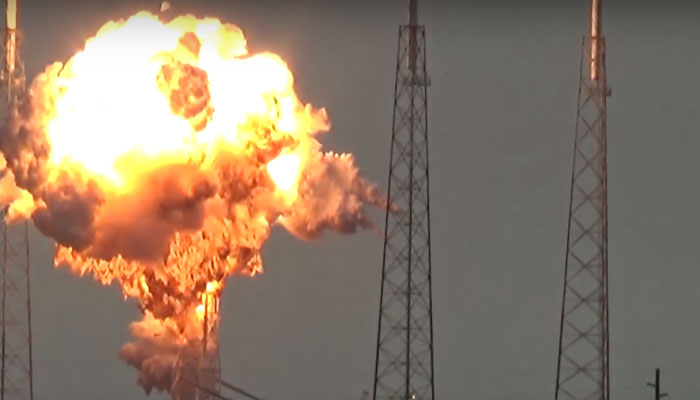-
Tips for becoming a good boxer - November 6, 2020
-
7 expert tips for making your hens night a memorable one - November 6, 2020
-
5 reasons to host your Christmas party on a cruise boat - November 6, 2020
-
What to do when you’re charged with a crime - November 6, 2020
-
Should you get one or multiple dogs? Here’s all you need to know - November 3, 2020
-
A Guide: How to Build Your Very Own Magic Mirror - February 14, 2019
-
Our Top Inspirational Baseball Stars - November 24, 2018
-
Five Tech Tools That Will Help You Turn Your Blog into a Business - November 24, 2018
-
How to Indulge on Vacation without Expanding Your Waist - November 9, 2018
-
5 Strategies for Businesses to Appeal to Today’s Increasingly Mobile-Crazed Customers - November 9, 2018
SpaceX: Accident points to breach in rocket’s helium system
Three weeks after one of its rockets exploded while on a launch pad at Cape Canaveral, SpaceX said Friday that it is narrowing in on the possible cause, pinpointing a “large breach” in a helium system in the rocket’s second-stage fuel tank.
Advertisement
According to SpaceX, the timeline of the explosion from the first signs of an anomaly to the loss of data is about 93 milliseconds or less than 1/10th of a second.
This illustration shows how helium is pumped into rocket fuel tanks to ensure a smooth flow of propellant to the combustion chamber.
An accident investigation team, which includes the company, NASA, the U.S. Air Force, and others, has rifled through about 3,000 channels of data, including video and photos.
“All plausible causes are being tracked”, the company said on its website.
In its statement, SpaceX stressed that it is committed to returning to flight quickly in a reliable and safe manner-perhaps as early as November.
“While substantial areas of the pad systems were affected, the Falcon Support Building adjacent to the pad was unaffected, and per standard procedure was unoccupied at the time of the anomaly”, the post read, pointing out that tanks and other infrastructure related to transporting liquid oxygen was unaffected.
SpaceX, owned and operated by technology entrepreneur Elon Musk, was fueling a Falcon 9 rocket on the launch pad in Florida on September 1 in preparation for a routine test-firing when a bright fireball suddenly emerged around the rocket’s upper stage. Helium is part of the pressurization system.
“We have exonerated any connection with last year’s mishap”, SpaceX said in Friday’s statement. The company had planned to conduct the first launch of Iridium Next communication satellites this month, followed by the first launch of a previously flown Falcon 9 booster and a cargo resupply launch to the International Space Station. “The pad’s control systems are also in relatively good condition”, the company said.
Advertisement
SpaceX continues to work on another pad, this one at neighboring Kennedy Space Center and once used to launch shuttles. Teams have continued inspections of the launch pad at Cape Canaveral Air Force Station and surrounding facilities.





























